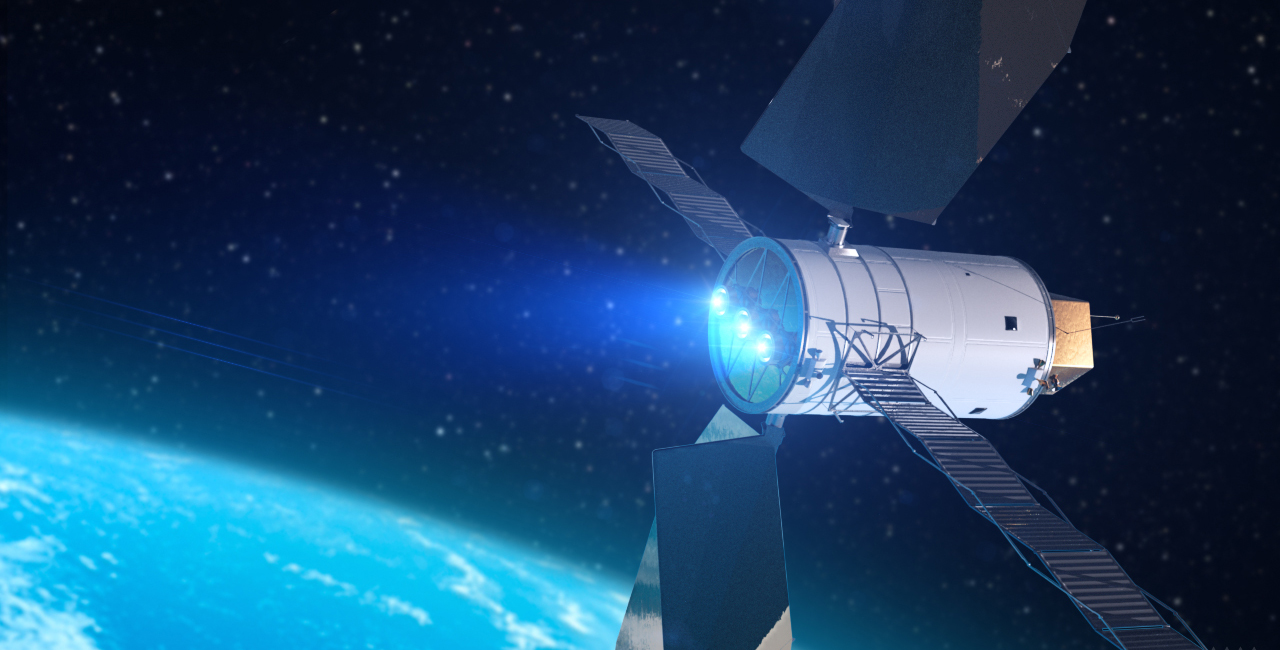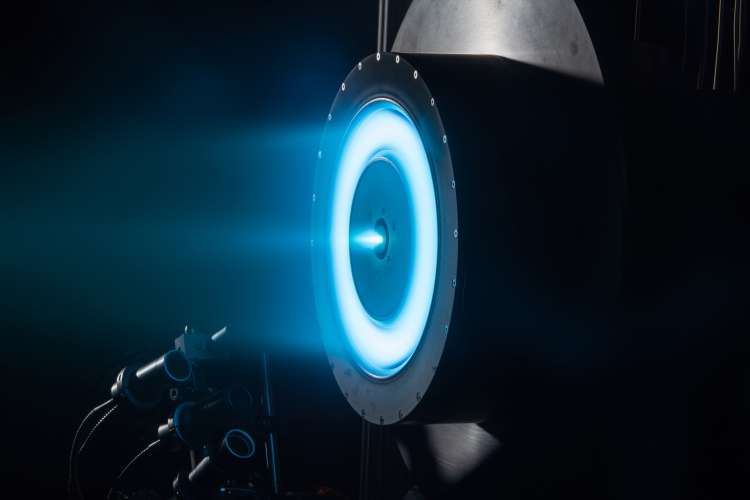Researchers have long explored the potential of harnessing the energy processes of the sun by fusing hydrogen atoms. Fusion produces vast amounts of energy and may one day provide electricity on Earth and power rockets throughout the solar system.
Nearly a century of research and experimentation has yielded some promising candidates for fusion power generation – the most mature of which remain massive in size with limited theorized uses beyond large terrestrial power grids. One takeaway from research into nuclear fusion, however, is that bigger may not necessarily be economically or commercially better. This understanding is driving the development of compact fusion reactor concepts.
To help advance discussion on investments and innovation in compact fusion and related technology, The Aerospace Corporation recently hosted a technical workshop with three U.S. federal agencies, private sector innovators and academic researchers.
“The more compact the fusion engine or reactor, the more applications we’ll see,” said Julie Reiss, Commercial Program Development Manager at Aerospace and Event Chair for the Tri-Agency Compact Fusion Workshop. “Making these systems smaller, improving efficiency and reducing resource requirements opens up a wide variety of applications that could revolutionize energy delivery.”
Joining Aerospace for the workshop were representatives from the U.S. Department of Energy’s Advanced Research Projects Agency (ARPA-E), NASA’s Space Technology Mission Directorate (STMD), the Defense Sciences Office within the Defense Advanced Research Projects Agency (DARPA) and the Defense Innovation Unit (DIU) within the U.S. Department of Defense.
“This workshop was important for the agencies to understand synergies in moving forward with funding opportunities for the commercial compact fusion community. Agencies shared perspectives and requirements for compact fusion technology with the industry leaders that will develop it,” Reiss said.

Unlocking the Potential of Fusion
ARPA-E, NASA, DARPA and DIU representatives provided overviews of their agencies’ respective interest in compact fusion capabilities and discussed coordinating a whole-of-government approach to accelerate development and improve commercial viability. Dr. Scott Hsu, Program Director at ARPA-E, noted that compact-fusion approaches aspiring for small unit size (in terms of both spatial footprint and peak generating capacity) are potentially attractive for primary-energy generation and a range of space and defense applications.
“There are reasons that the space or defense applications, though less explored for fusion, may actually have nearer-term potential given their possibly reduced techno-economic constraints compared to those of hypercompetitive commercial power-generation markets,” Hsu said. “Of course, micro and small-modular-sized fusion systems will have terrestrial commercial power and energy applications as well. In the longer term, compact fusion may be a disruptive technology that opens new markets, applications and possibilities that don’t exist today.”
Hsu added that fusion space propulsion is “possibly the ‘lowest-hanging fruit’ in terms of a first application for compact fusion, and cislunar agility and enabling crewed missions to Mars and beyond appear to have strong interest.”
Dr. Ron Litchford, Principal Technologist for NASA STMD, elaborated on compact fusion’s potential in space. “Long term, NASA views advanced energetic nuclear processes and concepts as the potential basis for transformational, rapid-transit, in-space propulsion capability that could open the entire solar system to vigorous science, exploration and commercial development, as well as pioneer our way into interstellar space,” he said. “Compact fusion is particularly intriguing in this respect because of the widespread research advancements being made on a number of concepts adaptable for low-specific-mass, high-specific-impulse space propulsion applications.”
Joining the workshop to provide updates on technical progress toward compact-fusion approaches were several academic researchers from across the U.S., multiple representatives from industry developing prototype capabilities, and the Limitless Space Institute, a non-profit organization focused on interstellar travel technology research.
Dr. Setthivoine You, Co-Founder and Chief Scientist for fusion propulsion at Helicity Space Corporation, noted how decades of meticulous research and scientific discovery have resolved many challenges previously considered “insurmountable” for some compact fusion solutions.
“One discovery – that shear flows can stabilize plasmas – showed that a compact fusion concept previously discarded as inherently unstable can now reach the same performance as an early conventional tokamak reactor with much less complexity,” You said. “These scientific discoveries, combined with new technologies and materials – like magnets, supercomputers, AI, advanced diagnostics and more – show the outlook for fusion is promising. We think that more viable choices offer more opportunities, more cost effectiveness, and more wide-ranging field of applications for fusion.”
Andrew Holland, CEO of the Fusion Industry Association (FIA), remarked on the sector’s rapid transformation in recent years.
“One of the benefits of a private fusion industry is that it is responsive to market demand. There is a clear need for faster and more powerful space propulsion technologies, and the fusion industry is innovating rapidly to meet the demand,” Holland said. “Our workshop showed that there was clear interest from the space community in this, and that the FIA members were pursuing a variety of technological approaches to meeting the challenge.”

Collaborating to Advance Compact Fusion Technology
Hsu, noting the broad stakeholder interest in compact fusion, underscored that multiple diverse markets for its applications, and collaboration within government and with the private sector, will stimulate research and technological maturity.
“There is a timely opportunity for DoE, NASA, and DoD to further define, pursue, and support coordinated activities to accelerate the development of compact fusion,” Hsu said. “Broad government and stakeholder support for applied research to advance the performance of compact-fusion approaches toward energy breakeven, while better defining the technical requirements for priority nearer-term space and defense applications, can accelerate compact-fusion development and demonstration and ensure U.S. leadership in this critical and transformative technology.”
Litchford said the consensus among workshop participants about compact fusion’s research readiness and technological promise paralleled a societal need and government’s receptiveness for its capabilities.
“Through coordinated and sustained R&D investments, the fundamental technology could potentially contribute real solutions to high priority societal challenges by enabling rapid deep space transportation capability, decarbonizing the energy economy and ameliorating climate concerns, ensuring national security space dominance, and reinvigorating national economic competitiveness,” he said. “As such, compact fusion stands as a well deserving candidate for an aggressive whole-of-government R&D initiative. A high priority should be placed on coordinated multi-agency rapid research and advancement investments targeting proof-of-feasibility milestones that would retire the major scientific risks, substantiate technical viability and establish a compelling technology development pathway toward laboratory scale prototypical demonstration outcomes.”
The conversation and collaboration on compact fusion innovation will continue. On June 15, Reiss moderated a panel featuring takeaways from the workshop titled “New Opportunities in Fusion for Space Power and Propulsion” as part of the virtual ASCENDx Summit, Accelerating Pathways to Space. You, who joined the panel, expressed excitement for the broader space community about the continued interest and development in compact-fusion capabilities.
“The stars seem to be aligning: the workshop confirmed it is an appropriate time to have three major government agencies join forces with industry and academia to further accelerate the development of compact fusion,” You said. “This small, long-gestating field is now growing fast and fits neatly in the overlap between the missions of the agencies, and collaboration with industry helps leverage the resources put into this national effort. The impact could be tremendous.”

